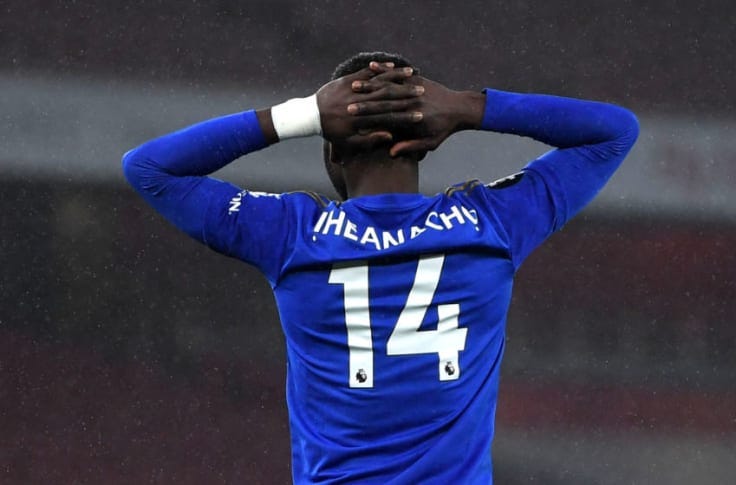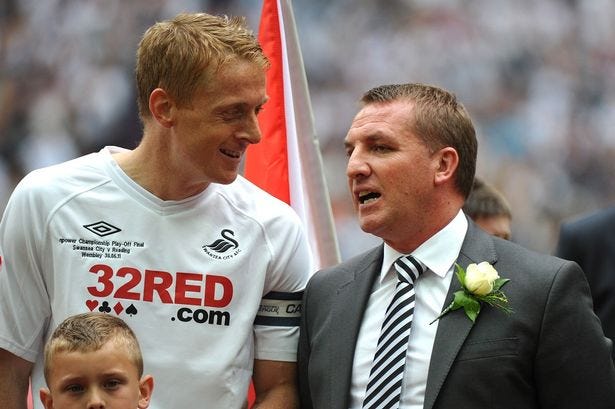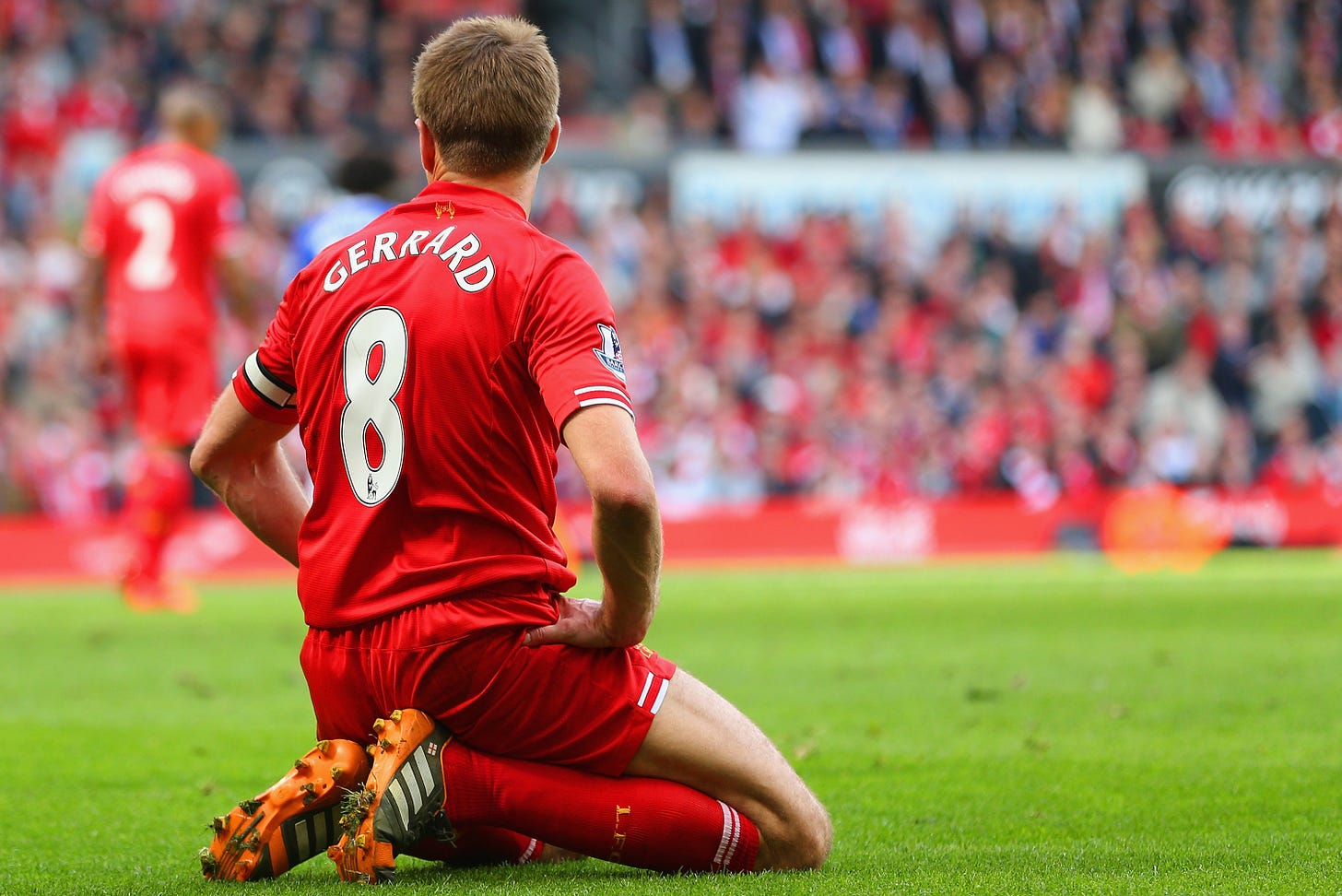Why Iheanacho is on the bench again at Leicester
It's really all about Brendan Rodgers finding inner peace
For all that it has the highest degree of randomness of arguably any sport, at its core, football is most neatly defined by its finite properties.
Because the dimensions of the pitch and the number of minutes allotted are fixed for any given match, football is about space and time. Whether your conception of football strategy dismisses complexity or scoffs at simplicity, it is easy enough to agree on this point: configure a team however you like, but the object is always for the ball to arrive to a player in space and with time to make the next play.
In the same way, football is about compromise. Every team starts with eleven player at kick-off, and that allocation must be distributed within the available space in such a way that it coheres with the overall strategy, while simultaneously interfering with that of the opponent to a degree. It may seem mundane to couch it in those terms, but for some coaches, this compromise can reach the level of something existential—almost spiritual. Getting to grips with and embracing that compromise – which we have come to refer to as “tactics” – is what leads to balance.
From time to time, individuals come along who challenge the coach’s commitment to the compromise he has made peace with. There are many reasons for this: ability, consistency, squad morale, or productivity. Sometimes, the coach heeds that imperative, lays his dogma aside, and takes up a new compromise; sometimes, (s)he does not. Sometimes, they try, unsuccessfully, to bargain. The challenging of preconceived ideas, especially those forged through fervid musings, can produce unpredictable outcomes.
Carlo Ancelotti famously tried to bargain – “I tried to put him on the right side like a winger. He didn't like it a lot.” – before discarding Gianfranco Zola early on in his managerial career at Parma, clutching his Sacchian 4-4-2 compromise to his chest like a beaded prayer amulet. It was the way the world made sense to him at the time. Since then, he has ironically acquired a reputation for rounding out square holes in order to hammer cylindrical pegs into them. All it took was a little more worldliness, the brilliant midday light of Zinedine Zidane shining into his eyes and a healthy dose of regret.
Not everyone has had a conversion experience. Marcelo Bielsa famously never budges, and since realising his platonic ideal of a 4-2-4 is not workable in modern football, Antonio Conte has found little use for pure wingers. Maurizio Sarri’s 4-3-3 is now almost a matter of principle, a hill to die on since he made the jump from Empoli to Napoli.
When Brendan Rodgers first hit the Premier League scene, it was with a Swansea side that played a very particular brand of football. It was methodical, based on positional play, and heavily possession-focused. The term “Swansealona” entered into the lexicon of English football (despite the fact that Barcelona did not typically use a 4-2-3-1 shape), and the style came to be closely linked to Rodgers and the Welsh club. When he joined Liverpool, it did not take very long for the Reds to themselves evince the same peculiarities. That was his compromise.
However, it was at Anfield that he began to show a little more flexibility, both in terms of shape and approach. Most pertinent to this consideration is his adoption of a midfield diamond in early 2014, and the situation that prompted that adaptation.
There were two key concerns. The first was Steven Gerrard: in his prime, one of the most dynamic midfielders in Premier League history but, on the cusp of 34, incapable of steaming around the pitch in the same way as he once did. The second was that the form of Luis Suarez increasingly dictated a central role. For much of the season, he had been used wide, with Daniel Sturridge playing as the designated centre-forward in either a 4-2-3-1 or a 4-3-3. However, it had become obvious as the season went on that, conscientious though the Uruguayan was, using him centrally was for the benefit of the team.
The diamond addressed both. With Jordan Henderson and Philippe Coutinho (or, occasionally, Joe Allen) either side of him, Gerrard had the menial labour he needed to concentrate on distributing the ball. With Suarez in a proper front two, Liverpool wreaked havoc on opposing defences, with Raheem Sterling offering direct dribbling through the middle.
The diamond was not without problems, however, even if the positives ultimately outweighed the negatives most of the time. Liverpool may have scored 25 goals in the eight games they started in that system (and won seven of them), but they shipped 10 goals themselves. It also had a clear weakness in wide areas whenever the ball was switched quickly and the far-side full-back was overloaded. It may have been a roaring success, but Rodgers himself did not fully trust it: for that infamous, ill-fated visit of Chelsea in April, he reverted to a 4-3-3. (Sturridge was returning from injury, but he was fit enough for the bench anyway, and why would you not start him if you could?)
The midfield diamond has not been seen much since, either from Liverpool or Rodgers. Deep in his soul, the Northern Irishman remains partial to 4-2-3-1; it is in this shape that he finds inner peace, much as he insists he wants his team to be flexible. There have been periods when he has strayed necessarily – the second half of last season, for instance, when he was forced to do without James Maddison and Harvey Barnes for a time – but it has never been a permanent thing.
However, from time to time, an individual comes along…
An unintended consequence of last season’s dalliance with a back three and a front two was the sudden explosion of Kelechi Iheanacho. The 3-5-2 was a system that, with no reliable wingers available, made sense, and the Nigeria international, who had previously appeared to be drifting like a plastic bag in the wind, caught fire and produced to such a ludicrous degree it became impossible to leave him out. Or so we thought.
Five games into the 2021/22 season, the 24-year-old has yet to start a Premier League game for Leicester City. The situation does not appear to bother him very much, but the latest defeat to Brighton and Hove Albion did lead to an outpouring of emotion on his behalf, with the consensus on social media being that Rodgers is off his rocker. Surely, if anyone had earned trust and a place in the team over the course of 2021, it was Iheanacho. Right?
Right. But then, it’s also not that simple.
Iheanacho has always been an unusual player. He is a great finisher, but he does not really work as an outlet because he is relatively easy to divest of the ball, is not blessed with searing speed and, despite being over 6ft tall, is pitiful both at winning aerial duels and drawing fouls. He is spectacular at chance creation, but cannot reliably function as the primary playmaking hub since he does not look after the ball well enough. These caveats make him a player that is close to impossible to plug into a pre-existing structure – he has to be the system, the entire point. Per FBRef’s Scouting Report (relative to players active in Europe’s top five leagues):
Having ruled out leading the line alone or pulling the strings as an out-and-out n.10, there are two ways to utilize Iheanacho, both quite particular. The first is as a “false 9”, as Rodgers did in the second half of their high-octane Europa League draw against Napoli last week. Thence, he produced a brilliant assist for Harvey Barnes, illustrating perfectly the requirements of the role – dropping off the front, carrying the ball forward from deep, and slipping through balls into the wide forwards.
However, considering Jamie Vardy is still kicking about in his dotage, and the club have invested in Patson Daka as a long-term replacement for the Englishman, there is little scope for the “false 9” as a sustained solution.
The second possibility is, more obviously, as a foil and partner to Vardy. It worked last season, so why can’t it again?
Well, that brings us right back to Rodgers’ compromise.
A front two means either one less defender or one less midfielder. Rodgers does not want to play a 4-4-2 consistently, and for good reason: it interferes with one of the core tenets of his philosophy, which is to “try to overload the middle of the pitch”. When he does, his teams often struggle—of the first half against Napoli, the 48-year-old said, “The game in the first half, with our system, we were down a man in midfield as we were playing with two strikers. Even though we got the goal, I didn’t think it allowed us to keep the ball like you’d need to at this level of the game.”
Using three centre-backs would allow him to play three midfielders, and he did achieve a landmark run to glory in the FA Cup last season with that system. However, to this point, Rodgers has typically turned to this either as a stop-gap measure or as a one-off to nullify specific opponents. It would also tax an already stretched centre-back department, shorn of Wesley Fofana and sweating over Johnny Evans’ crumbling body, even more.
The only acceptable compromise left then is the midfield diamond he has never been fully sold on. While at Swansea, he said of his philosophy, “We look at the two phases of transition, which is very important to the way we play, in particular the defensive transition,” and as we discussed earlier, the defensive transition phase is the single biggest weakness of the diamond midfield.
While it is certainly workable on the surface of it, right down to using Harvey Barnes as a direct, dribbling n.10 behind ‘Varnacho’, it is a “new” idea that Rodgers will have to not just get to grips with, but also embrace. Short of a conversion event, it will understandably take a little while.
Thank you for reading Chaos Digest. If you enjoyed this post, do consider subscribing to receive subsequent newsletters in your email.









Thank you, thank you, solace chukwu, you are one of my best writer in goal.com, you're an inspiration,looking forward to reading More
of your articles and learning from you...
This is fantastic writing! Football analysis aside, as someone interested in improving my writing, your piece sheds light on proper grammar and sentence structure. I see you have an affinity for the comma after "that", in the middle of sentence, as used in: “The 3-5-2 was a system that, with no reliable wingers available, made sense….” I never knew that was a “thing,” but a google search has opened my eyes. Although, I have seen arguments in favour of getting rid of first and second comma after the “that”.
That aside, the football analysis is very insightful. I particularly like the historical anecdotes and references you use to buttress your point. The Ancelotti one, I must say, sold me.
I take pride in being a football fanatic, but evidently, I have a lot to learn about the tactics and formations.
Signing up for your newsletter is a no-brainer.